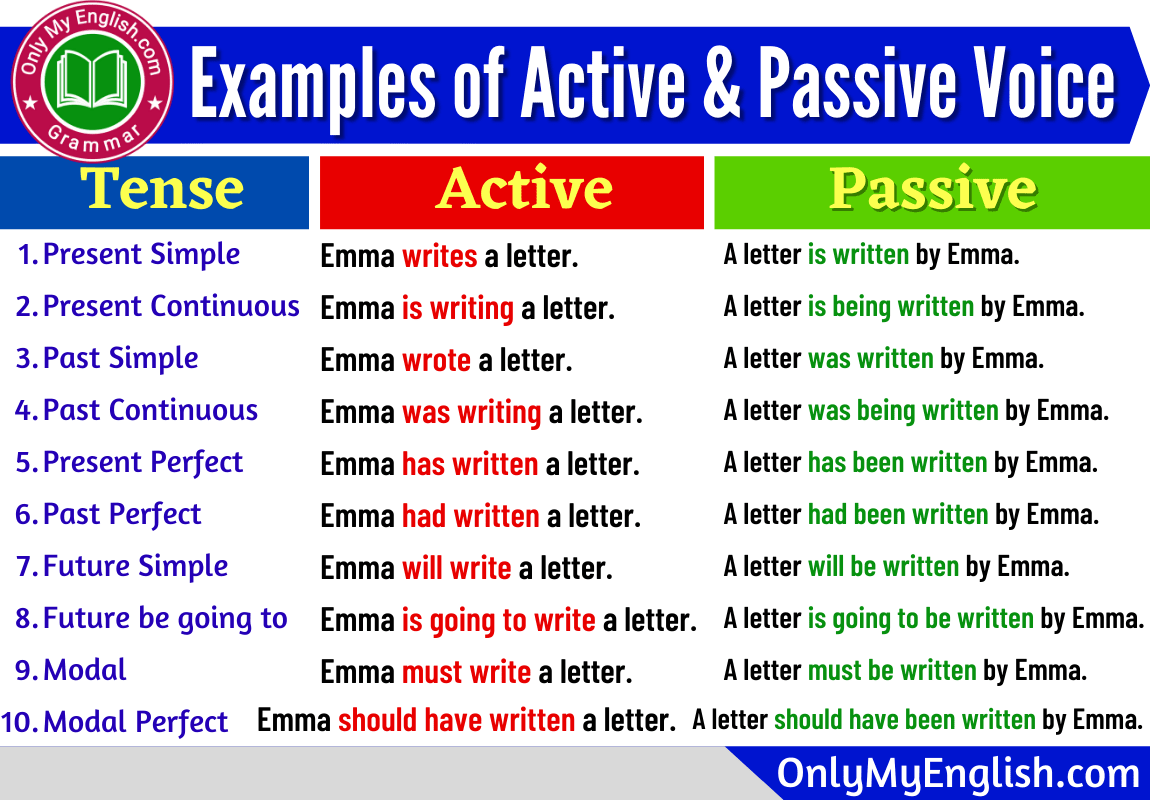When it comes to writing, understanding the difference between passive and active voice is crucial. Whether you are writing an essay, a report, or any other type of document, using the appropriate voice can greatly impact the clarity and effectiveness of your writing. In this article, we will explore examples of both passive and active voice to help you better understand when and how to use each.
1. The cake was baked by Sarah. (Passive)
2. The report will be submitted by the end of the day. (Passive)
3. The book was read by the entire class. (Passive)
Passive voice is used when the subject of the sentence is the receiver of the action, rather than the doer. It often makes the sentence sound more formal or impersonal. While passive voice can be useful in certain situations, it is generally considered less engaging and direct than active voice.
Using passive voice can also make sentences longer and more complex, which may lead to confusion or ambiguity. It is important to be mindful of when and how you use passive voice in your writing to ensure clarity and coherence.
Active Voice Examples
1. Sarah baked the cake. (Active)
2. I will submit the report by the end of the day. (Active)
3. The entire class read the book. (Active)
Active voice, on the other hand, is more direct and engaging. In active voice, the subject of the sentence performs the action, which makes the sentence clearer and more concise. Active voice is generally preferred in most types of writing, as it helps to maintain a strong and engaging tone.
Using active voice can also make your writing more dynamic and interesting, as it allows you to clearly identify who is doing what in a sentence. By using active voice, you can create a sense of immediacy and directness that is often lacking in passive constructions.
In conclusion, understanding the difference between passive and active voice is essential for effective writing. While passive voice can be useful in some situations, active voice is generally preferred for its clarity and directness. By incorporating both passive and active voice examples into your writing, you can create a well-rounded and engaging piece of work that effectively communicates your message to your audience.
